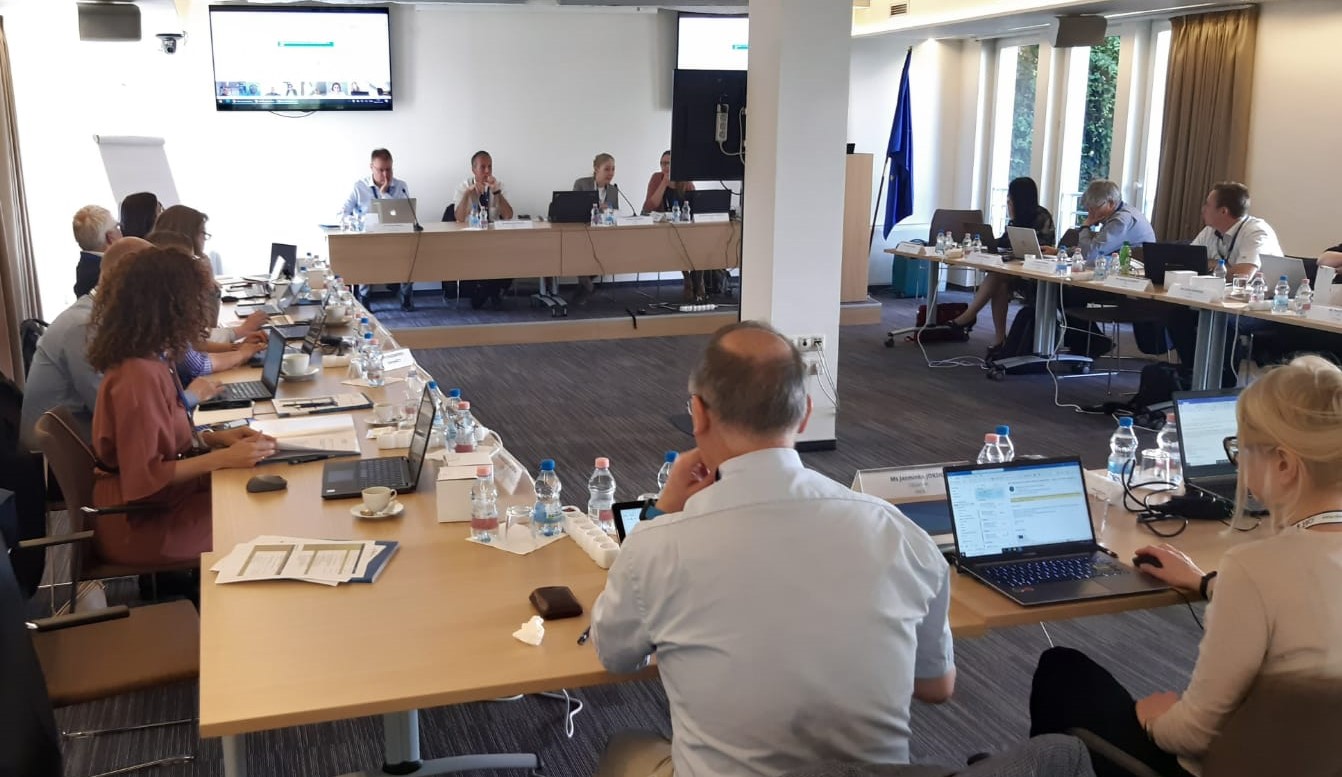Contenido principal
2022
HERCA Steering Committee strengthens cross-border cooperation and robust communication protocols in case of emergency

A delegation of the Spanish Nuclear Safety Council (CSN), headed by commissioner Pilar Lucio, has participated in the twenty-ninth meeting of the Board of the Heads of the European Radiological protection Competent Authorities (HERCA) held in Budapest .
The meeting began on the 19th with the intervention of the new president of HERCA, Nina Cromnier, belonging to the Swedish regulatory body who shared with the attendees the main activities of representation of the association in the last semester.
In this regard, the work carried out to implement the new HERCA strategy, approved at the autumn 2021 meeting, and the consultation sent to the representatives to find out their proposals to improve the functioning of the association were pointed out. Commissioner Lucio highlighted the possibilities that the new hybrid meeting formats (online and face-to-face) could provide efficiency and optimize daily work and that it is therefore advisable to maintain. “It is important to insist on the face-to-face meetings as it improves mutual knowledge and trust, but at the same time, the videoconference format ensures attendance in almost any circumstance, which allows us to optimize time and be more efficient” she added.
Likewise, the main activities carried out in relation to the interaction with the International Commission on Radiological Protection (ICPR) and the collaboration in its project to update the recommendations on aspects related to radiological protection have been reviewed. In this sense, HERCA members have identified among the most relevant issues to be addressed by the ICRP: the simplification and clarification of the radiological protection system; the justification, optimization and use of reference levels; radon-related issues and improved communication.
Working groups
The different working groups that compose HERCA have presented the advances in their different areas of action. In this sense, the activities of the Working Group on Emergencies (WGE) have been highlighted which in particular and as a result of the invasion of Ukraine on February 24th and the events at the Zaporizhzhia nuclear power plant on March 4th, has made specific efforts for the review of national emergency response plans and has established four special tasks to follow up during the invasion. In addition, a document of recommendations related to the coordination of the emergency centers of the different countries has been prepared on the improvement of communication and in the implementation of a coordinated response to Ukraine and nearby countries in case of emergency.
Likewise, the Working Group on Natural Radiation (WGNAT), has presented its progress in terms of National Action Plans against radon, as well as in the management of waste containing natural radionuclides, better known as NORM waste.
As usual, the meeting has had other relevant international organizations in terms of radiological protection that usually participate as observers within the Association, such as the International Atomic Energy Agency (IAEA), the European Commission and the Nuclear Energy Agency (NEA).
About HERCA
HERCA was created in 2007 to initiate an exchange of knowledge and experiences in order to facilitate practical and harmonized solutions to important regulatory issues in radiation protection. Although in the European Union the regulatory framework for radiological protection is limited to regulations drawn up by the European Commission, such as Regulations or Directives, the practical application of these requirements can be carried out in very different ways by each member state.
The association is composed of representatives of 56 European authorities competent in Radiological Protection, belonging to 32 European countries.
To carry out their work, working subgroups have been established to cover the radiological protection of exposed workers, the safety of radioactive sources, actions in case of emergencies, activities related to radiological protection in the medical field, both for exposed workers and patients, activities related to radiological protection in industrial facilities, and training in radiological protection.
* Check here the glossary of technical terms *
